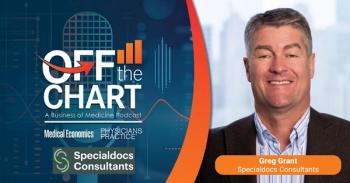
AAFP calls on Congress to protect tax benefits for family physicians
Key Takeaways
- The AAFP urges Congress to maintain and expand tax incentives for independent family physicians to address market consolidation and financial pressures.
- They recommend targeted tax relief for rural primary care physicians, including significant annual income tax credits for those serving Medicare and Medicaid patients.
In a statement to the House Ways and Means Committee, the AAFP pushes for incentives to sustain independent practices and expand rural care.
As Congress weighs the future of key tax policies, the
In a
“Increasingly, family physicians report that independent practice is unsustainable,” the Academy said. “Market consolidation, physician payment cuts and administrative burden are just a few of the factors that have contributed to this practice model shift.”
Independent practices
With just 21% of AAFP members now practicing in independent settings — down from 37% in 2011 — the Academy urged Congress to sustain provisions from the Tax Cuts and Jobs Act that benefit small practices, including Section 199A and 179 expensing.
The AAFP also recommended expanding small business tax credits and pass-through income deductions to ease financial pressures on privately owned family medicine practices.
Additionally, the Academy proposed targeted tax relief for primary care physicians practicing in rural areas, suggesting a $50,000 annual income tax credit for those serving Medicare and Medicaid patients in these communities. Physicians providing prenatal and obstetric care in these areas would be eligible for an additional $25,000 annual credit.
ACA tax credits, high-deductible health plans
The AAFP also urged Congress to permanently extend the Affordable Care Act’s (ACA’s) advanced premium tax credits (APTCs), which have already facilitated significant enrollment increases among lower-income individuals.
The Inflation Reduction Act’s temporary expansion of APTCs led to a 115% rise in ACA plan enrollment for low-income Americans since 2020.
“Unfortunately, if there is no congressional action to extend the APTCs beyond the end of this year, premiums will increase dramatically for many individuals who cannot otherwise afford coverage... resulting in additional costs to the federal government and our health care system,” the Academy cautioned in their letter.
They also called for codifying Internal Revenue Service (IRS) guidance that allows high-deductible health plans to cover certain chronic care management services prior to patients meeting their deductibles.
Student loan relief, preceptor credits
The group pressed lawmakers to exempt federal loan repayment programs from taxation, emphasizing that the average medical school graduate carries between $200,000 and $250,000 in student debt.
The Academy supported bipartisan legislation, including the Strengthening Pathways to Health Professions Act, which would ensure that federal loan repayment funds remain tax-free.
To address physician shortages in rural areas, the AAFP backed tax credits for medical residency preceptors. The Rural Health Preceptor Tax Fairness Act, which the Academy supported in the previous Congress, would grant a $1,000 tax credit to preceptors in medically underserved areas.
Tax-exempt medical nonprofits
The AAFP also advocated for protecting the tax-exempt status of nonprofit organizations that support family physicians and their patients.
The Academy argued that state chapters and medical organizations rely on tax exemptions to provide continuing medical education, clinical resources and administrative support to physicians, saying: “As Congress considers policy options to fund tax reform policies, the Academy urges the Committee to ensure that the important role that we and our state chapters play in supporting our family physician workforce and access to care for patients in all communities is not undermined.”
Newsletter
Stay informed and empowered with Medical Economics enewsletter, delivering expert insights, financial strategies, practice management tips and technology trends — tailored for today’s physicians.








